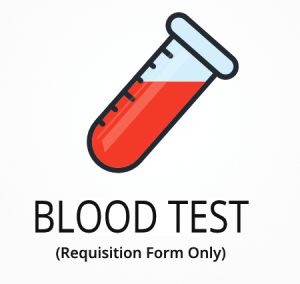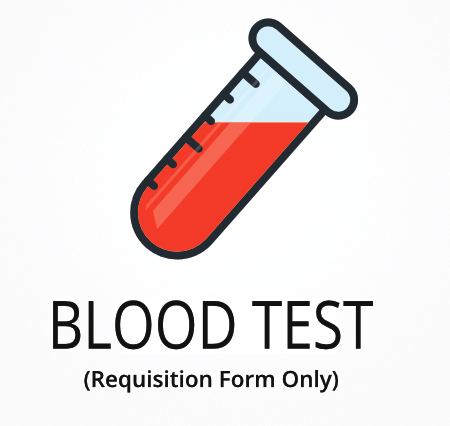Ordering the Comprehensive GI-Effects | DNA Stool Test | 3-Day Collection
Ordering the Comprehensive GI-Effects | DNA Stool Test | 3-Day Collection helps identify imbalances in gut bacteria, yeast, parasites, and markers for digestion and inflammation. This test uses advanced DNA technology to detect a wide range of digestive issues, including those that may not show up with standard stool tests. Interestingly, this test can also identify drug resistance genes in bacteria, which can help guide more effective treatment options.
When ordering this test, you gain access to a detailed analysis of your gut environment and digestive function:
- Detects hard-to-find parasites and pathogens with a three-day sample collection.
- Measures markers for inflammation, such as calprotectin and eosinophil protein X, to help distinguish between different digestive conditions.
- Assesses the balance of beneficial and harmful bacteria, including those linked to weight changes and immune function.
- Identifies yeast and fungal overgrowth that may contribute to digestive symptoms.
- Evaluates pancreatic function and nutrient absorption to pinpoint causes of digestive discomfort.
Who Should Consider Advanced Gut Microbiome and Digestive Function Testing
People who experience ongoing digestive symptoms like bloating, gas, constipation, or diarrhea may benefit from this test. For example, someone who has tried multiple diets and supplements for stomach pain but still feels unwell could use this test to uncover hidden imbalances or infections.
Ordering this test may also be helpful in these situations:
- Persistent digestive symptoms that have not improved with standard treatments
- Unexplained nutrient deficiencies despite a balanced diet
- Family history of digestive conditions such as celiac or Crohn’s disease
- Recent travel with ongoing stomach issues
- Unexpected skin rashes that may be linked to gut imbalances
This test provides clear answers about gut bacteria, inflammation, and digestion, which can help guide targeted changes in diet or treatment. Delaying this test could mean missing early signs of gut problems that may become harder to manage over time. To get a more complete picture of your digestive health, consider ordering this test.
How to Prepare for Digestive Tract DNA Analysis
Fasting is not required for this test, but you will need to collect stool samples over three days for the most accurate results. Make sure to carefully follow any instructions your doctor or healthcare practitioner provides to ensure your samples are collected and handled correctly.
Labs Included When Ordering Your Comprehensive GI-Effects | DNA Stool Test | 3-Day Collection
| Test Name | Reference Range | Significance | Low and High Levels of Comprehensive GI-Effects | DNA Stool Test | 3-Day Collection |
|---|---|---|---|
| Gut Bacteria (Commensal/Opportunistic) | |||
| Bacteroides-Prevotella group | High: >1.0 Low: <0.1 |
These bacteria help break down complex carbohydrates and support gut health. They are important for maintaining a balanced digestive system. | High levels mean possible overgrowth, which may cause gas or bloating.
Low levels mean reduced fiber breakdown and less support for gut lining. |
| Faecalibacterium prausnitzii | High: >0.5 Low: <0.1 |
This beneficial bacteria produces butyrate, a short-chain fatty acid that helps reduce inflammation in the gut. | High levels mean increased butyrate, which may be protective.
Low levels mean less anti-inflammatory support in the gut. |
| Lactobacillus spp. | High: >1.0 Low: <0.1 |
Lactobacillus helps maintain a healthy gut environment and supports digestion of lactose, the sugar in milk. | High levels mean possible overgrowth, which can cause digestive upset.
Low levels mean less support for lactose digestion and gut balance. |
| Bifidobacterium spp. | High: >1.0 Low: <0.1 |
Bifidobacterium supports immune function and helps break down dietary fiber into useful nutrients. | High levels mean possible overgrowth, which may cause gas.
Low levels mean less fiber breakdown and weaker immune support. |
| Escherichia coli | High: >0.5 Low: <0.1 |
E. coli is a normal gut bacteria, but some strains can cause infection or diarrhea if present in high amounts. | High levels mean possible infection or digestive upset.
Low levels mean less competition for harmful bacteria. |
| Akkermansia muciniphila | High: >0.5 Low: <0.1 |
Akkermansia helps maintain the gut lining and may support weight management and metabolic health. | High levels mean increased gut lining support.
Low levels mean weaker gut barrier and possible inflammation. |
| Methanobrevibacter smithii | High: >0.5 Low: <0.1 |
This microbe produces methane, which can slow down gut movement and contribute to constipation. | High levels mean increased methane and possible constipation.
Low levels mean less methane and faster gut movement. |
| Pathogenic Bacteria, Yeast, and Fungi | |||
| Yeast/Fungi | High: Detected Low: Not detected |
Yeast and fungi overgrowth can cause digestive symptoms like bloating, gas, and changes in stool. | High levels mean possible overgrowth and digestive symptoms.
Low levels mean no overgrowth detected. |
| Pathogenic Bacteria | High: Detected Low: Not detected |
Pathogenic bacteria can cause infections, diarrhea, and inflammation in the digestive tract. | High levels mean infection risk and possible symptoms.
Low levels mean no infection detected. |
| Parasites (Cryptosporidium, Giardia, Entamoeba) | High: Detected Low: Not detected |
Parasites can cause diarrhea, stomach pain, and nutrient loss. The test checks for common parasites that may be missed by other methods. | High levels mean active infection and possible symptoms.
Low levels mean no parasites detected. |
| Digestive Function and Inflammation Markers | |||
| Calprotectin | High: >50 Low: <16 |
Calprotectin is a marker for inflammation in the gut and helps distinguish between irritable bowel and inflammatory bowel disease. | High levels mean active inflammation, possibly from IBD.
Low levels mean little or no inflammation present. |
| Eosinophil Protein X (EPX) | High: >50 Low: <16 |
EPX is an immune marker that can show allergic or immune-related inflammation in the gut. | High levels mean allergic or immune inflammation.
Low levels mean little or no immune response detected. |
| Fecal sIgA | High: >400 Low: <51 |
Secretory IgA is an antibody that helps protect the gut lining from infection and inflammation. | High levels mean increased immune activity in the gut.
Low levels mean reduced immune defense in the gut. |
| Pancreatic Elastase | High: >500 Low: <200 |
This enzyme shows how well the pancreas is working to help digest food, especially fats and proteins. | High levels mean normal or increased enzyme output.
Low levels mean possible pancreatic insufficiency and poor digestion. |
| Short Chain Fatty Acids (SCFA) Total | High: >20 Low: <10 |
SCFAs are produced by gut bacteria breaking down fiber and are important for gut lining health and energy. | High levels mean increased fiber fermentation.
Low levels mean less fiber breakdown and weaker gut lining. |
| Beta-Glucuronidase | High: >4000 Low: <2000 |
This enzyme is made by gut bacteria and can affect how the body processes toxins and hormones. | High levels mean increased toxin recycling and possible hormone imbalance.
Low levels mean less recycling of toxins and hormones. |
| Fecal Fat (Total) | High: >7 Low: <2 |
Measures how well fats are digested and absorbed. High levels can mean poor fat digestion or absorption. | High levels mean poor fat digestion or absorption.
Low levels mean normal fat digestion. |
| Fecal Occult Blood | Negative | Checks for hidden blood in the stool, which can be a sign of bleeding in the digestive tract. | High levels mean possible bleeding in the digestive tract.
Low levels mean no blood detected. |
| HpSA – H. pylori | Negative | Detects H. pylori, a bacteria that can cause ulcers and stomach pain. | High levels mean active H. pylori infection.
Low levels mean no infection detected. |
| Clostridium difficile | Negative | Checks for C. difficile, a bacteria that can cause severe diarrhea and inflammation. | High levels mean active infection and risk of severe diarrhea.
Low levels mean no infection detected. |
| Campylobacter spp | Negative | Detects Campylobacter, a bacteria that can cause food poisoning and stomach upset. | High levels mean active infection and possible food poisoning.
Low levels mean no infection detected. |
| Shiga toxin E. coli | Negative | Checks for E. coli strains that produce shiga toxin, which can cause severe illness. | High levels mean infection with shiga toxin-producing E. coli.
Low levels mean no infection detected. |
| Fecal Lactoferrin | High: >7.25 Low: <2.5 |
Lactoferrin is a marker for white blood cell activity and inflammation in the gut. | High levels mean active inflammation or infection.
Low levels mean little or no inflammation. |
| Drug and Natural Agent Sensitivity | |||
| Bacteria Drug Sensitivity (Prescriptive and Natural Agents) | Sensitive/Resistant | Shows which antibiotics and natural agents are most effective against detected bacteria, helping guide treatment choices. | High resistance means fewer treatment options.
Low resistance means more options for treatment. |
Reference ranges may change slightly as labs update their methods and guidelines. Always review your results with your healthcare provider for the most current interpretation.
Comprehensive GI-Effects | DNA Stool Test | 3-Day Collection FAQ
Is there Comprehensive GI-Effects | DNA Stool Test | 3-Day Collection testing near me?
This is a home test kit, so you can collect your stool samples locally and send them to the lab using the included shipping materials. For those dealing with ongoing digestive symptoms, being able to collect samples at home makes the process easier and avoids the need to travel when discomfort is present; check the draw location link at the top of the page for more details.
How do I interpret the test results?
While your treating physician should review your results, we also offer a one-on-one test results review with our clinical team to help you understand your report and next steps.
What is the cost of the test?
The price listed for this test includes standard shipping to your address and return shipping to the lab, though draw fees may apply. Ordering this test can help you quickly identify the root cause of digestive symptoms, so you can start targeted treatment sooner.
How often should I retest?
Retesting is usually recommended every 6 to 12 months, especially if you are making changes to your diet or treatment plan, to track improvements or new changes in your gut environment.
How accurate is the test?
This test uses advanced DNA PCR technology to detect bacteria, yeast, and parasites with a specificity of 98% and sensitivity of 97%. TrueHealthLabs.com partners with CLIA-certified and CAP-certified laboratories to uphold rigorous testing standards for dependable results.
Medical Review Board
Reviewed by Jeff Donohue M.D. from Body Logic and Brady Hurst DC, CCCN. Written by True Health Lab’s team of editorial health contributors.
Disclaimer: This information is for educational purposes only and not intended as medical advice. Consult your healthcare provider for personalized guidance.
Why Customers Trust True Health Labs – What People are saying
Also rated 4.6 out of 5 based on 3452 ShopperApproved reviews- See all TrueHealthLabs.com reviews.









